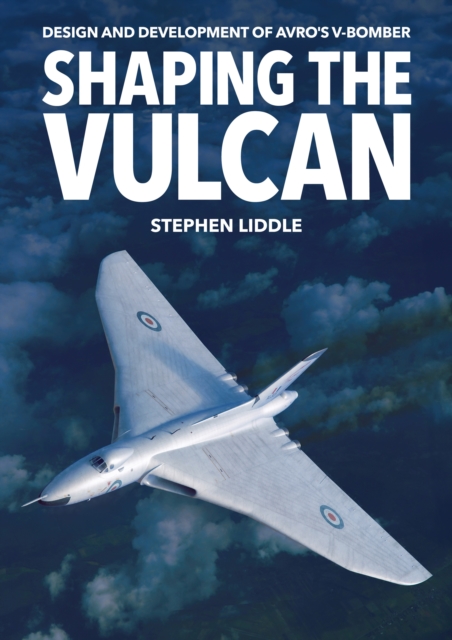Shaping the Vulcan

Shaping the Vulcan
RAF Bomber Command had successfully fought its way through the Second World War with conventionally laid-out aircraft, such as Avro's own Lancaster, so what prompted the radical rethink which resulted in the Vulcan's visually striking design?
It didn't happen by chance or by accident. Vulcan represented the applied scientific and engineering might of a nation - a combination of new propulsion systems, new electronics, a new understanding of aerodynamics and, above all, new ordnance. Avro's postwar bomber became the cutting edge of Britain's nuclear deterrent; forged in record time as a means of delivering atomic destruction should the necessity arise.
In Shaping the Vulcan, aerodynamicist Stephen Liddle traces the origins of the technology underpinning the Vulcan's development and how it was combined to create a weapon like no other. His account includes previously unpublished images, expert analysis of contemporary data and a detailed review of the engineering effort applied, to establish a new understanding of precisely how and why the Vulcan emerged as one of the most celebrated and distinctive aircraft in British aviation history.
This is not a tale of eye-patches and Black Buck - rather, it is an origin story; an account of how previously unimaginable technology came together in the form of a beautiful aircraft, operating at the edge of the possible, to defend the nation against a threat greater than any seen before in human history.
The Avro Vulcan is one of the most striking aircraft ever made - its enormous wing stretching back from an improbably thick leading edge marked by cavernous wing root engine intakes. Perhaps even more incredible, its first flight was made just over ten years after the introduction of the piston-engined Lancaster during the Second World War. Within a decade, technology had taken a giant leap from straight-winged slow-moving conventional bombers to this vast delta designed to carry a nuclear payload.
But what led to such a radical configuration and what was the technology that enabled such an ambitious design? What possessed Avro to offer the Air Ministry such a futuris
PRP: 252.00 Lei
Acesta este Prețul Recomandat de Producător. Prețul de vânzare al produsului este afișat mai jos.
226.80Lei
226.80Lei
252.00 LeiLivrare in 2-4 saptamani
Descrierea produsului
RAF Bomber Command had successfully fought its way through the Second World War with conventionally laid-out aircraft, such as Avro's own Lancaster, so what prompted the radical rethink which resulted in the Vulcan's visually striking design?
It didn't happen by chance or by accident. Vulcan represented the applied scientific and engineering might of a nation - a combination of new propulsion systems, new electronics, a new understanding of aerodynamics and, above all, new ordnance. Avro's postwar bomber became the cutting edge of Britain's nuclear deterrent; forged in record time as a means of delivering atomic destruction should the necessity arise.
In Shaping the Vulcan, aerodynamicist Stephen Liddle traces the origins of the technology underpinning the Vulcan's development and how it was combined to create a weapon like no other. His account includes previously unpublished images, expert analysis of contemporary data and a detailed review of the engineering effort applied, to establish a new understanding of precisely how and why the Vulcan emerged as one of the most celebrated and distinctive aircraft in British aviation history.
This is not a tale of eye-patches and Black Buck - rather, it is an origin story; an account of how previously unimaginable technology came together in the form of a beautiful aircraft, operating at the edge of the possible, to defend the nation against a threat greater than any seen before in human history.
The Avro Vulcan is one of the most striking aircraft ever made - its enormous wing stretching back from an improbably thick leading edge marked by cavernous wing root engine intakes. Perhaps even more incredible, its first flight was made just over ten years after the introduction of the piston-engined Lancaster during the Second World War. Within a decade, technology had taken a giant leap from straight-winged slow-moving conventional bombers to this vast delta designed to carry a nuclear payload.
But what led to such a radical configuration and what was the technology that enabled such an ambitious design? What possessed Avro to offer the Air Ministry such a futuris
Detaliile produsului










